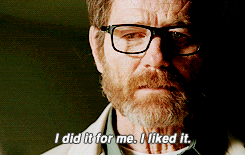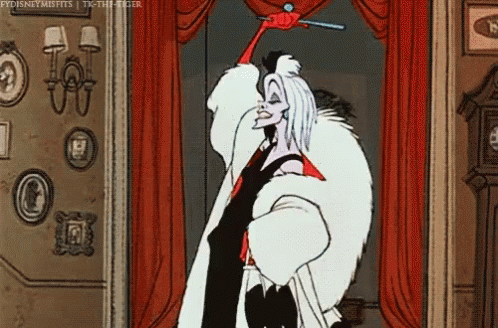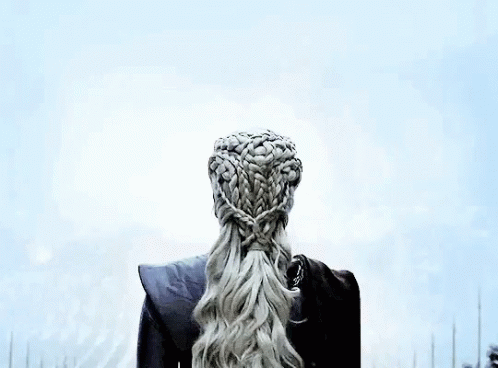
Villains are tremendously important for a story. They set the framework and standard for a lot of things in an unsaid but definite manner: how far your villain is willing to go sets up audience expectations for how big and how dire the stakes will be in the story.
If the villain will not harm a child, the story is generally ‘safer’ for the good guys, because the biggest force of opposition and aggression has boundaries. If the villain will harm the child, then the stakes instantly shoot up. If the villain will harm the child and like it, the stakes are through the roof. Because that telegraphs to the audience that the villain has no limits, no moral limitations/inhibitions, and will have no problem to inflict all kinds of real, deeply nasty and potentially permanent consequences.
Same goes if they will harm the dog. 
That said, just having an evil character that laughs and kills puppies isn't going to make them popular if they aren't nuanced…
…ok fine it might make them popular in certain types of stories, or if they have attributes that make them memorable and with a personality that is larger than life, in a manner of the audience loving to hate them. For sure.
But what of when you need a villain arc, or a demonstration of how that villain ended up that way? the idea that “they were always evil” can work, especially if you got a ‘sinister kid’ sequence, but it can also be quite unrealistic or boring as most people if not all people are born a blank slate with a propensity for good.
So it you're going for a more multi-layered character that is still, definitely and unequivocally evil, you might want to do a little bait and switch with your audience- give them something to sympathize with in the villain character. Something that resonates with them and gives the villain motivations that the audience would side with or at least understand.
As they are pushed forth by this motivation, foreshadow where they'll end up by the little behavioral things: they may not be interested in not causing harm to whatever is in their way, as they hurry to accomplish X or Y good thing. An easy example would be a superhero that flings people out of their way knowing they're causing them to die or be very injured, and doesn't feel that's a problem. Or they overstep their boundaries when there's no reason to do so, like stalking their SO just because they can.
That indicates that the character is ok with objectively criminal/evil things being committed if they serve that character's purpose.
That's the top of the slippery slope. Making these little judgment calls that get slowly, progressively, bigger and bigger. For example, the superhero kills the kitten to make sure it doesn't give him/her away, then a little down the line and with bigger/similar stakes, they suffocate the baby for the same reason. Then he/she needs to account for why the baby is dead, but doesn't want the extra problems of admitting to having killed a baby, so he/she stages the scene to appear the baby died in its sleep. But that gets the babysitter in trouble, because eventually it's discovered the baby suffocated and only she was in the house with the baby that the authorities know of. The superhero is also ok with that. Later on, some family member of the incarcerated babysitter realize the superhero did it, so the superhero kills that family member before they go to the police. The superhero is now a villain. And this entire slide down the slippery slope might have happened while the now-villain was saving an entire country from some huge other annihilating threat.
The slippery slope is a great device for getting your audience to emotionally engage with your villain in a visceral way. If they start off loving/liking that character, they will probably forgive the first few slips down the slope. But as the character keeps sliding, they will need to realize that this is Not Okay, and that creates dissonance in the viewer, because they have to acknowledge something negative about a character they'd classified as good, and now they need to shift their stance and emotions. This is especially powerful if the slope's dilemmas are very tough/gray, like those ethics problems we had in college. Before the character hits the Point of No Return down the slope, these dilemmas will cause the audience to consider and evaluate moral and ethical issues, and that helps with immersion and investment in the story.
Of course, this works for dramas and character pieces a lot more than your standard action story- not that it can't happen within the framework of an action story. It can be a slow burn if the story is linear, or tough to wrangle if you approach it through flashbacks. Either way, it does require more thought to why the villain is a villain, and what they lack (or gave up) to be that instead of being good. But all that work pays off in the form of a powerful villain arc and an even more iconic villain.
This could have been you, GoT showrunners, but you shot your load too fast. :/
Don’t forget you can now advertise on DrunkDuck for just $2 in whichever ad spot you like! The money goes straight into running the site. Want to know more? Click this link here! Or, if you want to help us keep the lights on you can sponsor us on Patreon. Every bit helps us!
Special thanks to our patrons!!



Justnopoint - Banes - RMccool - Abt_Nihil - Gunwallace - PaulEberhardt - Emma_Clare - FunctionCreep - SinJinsoku - Smkinoshita - jerrie - Chickfighter - Andreas_Helixfinger - Tantz_Aerine - Genejoke - Davey Do - Gullas - Roma - NanoCritters - Teh Andeh - Peipei - Digital_Genesis - Hushicho - Palouka - cheeko - Paneltastic - L.C.Stein - dpat57 - Bravo1102 - The Jagged - LoliGen - OrcGirl - Miss Judged - Fallopiancrusader - arborcides - ChipperChartreuse - Mogtrost - InkyMoondrop - Jgib99 - Hirokari - Orgivemedeath Ind - Mks Monsters - GregJ

The Slippery Slope (Or How to Make a Great Villain Origin Arc)
Tantz_Aerine at 12:00AM, May 6, 2023
6 likes!


©2011 WOWIO, Inc. All Rights Reserved Mastodon





Jason Moon at 8:13AM, May 6, 2023
Such a great news post! Villains can be so much fun for a creator to play with but at times it can just give your viewers anxiety or angst towards the scene. I find villains who are beautiful on the outside and appear perfect to be fascinating because their mind and intentions are horrendous but it's concealed in a way because of how they look and present themselves. I personally enjoy female villains because women are sexy and can pull strings differently than a male villain(in my opinion). Eeve doesn't consider herself a villain, she thinks of herself as a goddess at work on a primitive planet full of weak humans. To her humans are disgusting underdeveloped creatures (children especially) and she is doing them a favor by turning them into evolved creatures that serve her. In her eyes she is making them into something beautiful and powerful that will obey her plans. A girl with goals and ambitions that will warp and change universes.
InkyMoondrop at 6:23AM, May 6, 2023
Good article. (although I never considered Daenerys to be a heroine, she never had any problems with extreme cruelty, only audiences did not care as long as she punished those they deemed "deserved it". The last season was rushed and botched in a lot of ways, but it's not the 180 turn for character many people paint it to be. Not that my opinion was ever popular in this regard, I also found Jaime's storyline to be satisfactory while I haven't seen anyone that shares that). My next chapter is partially an origin story to the villain and how he got to the point where taking human lives mean nothing to him but I'm not using a slippery slope (which really is a good technique), I just make both his motivations and logic accessible, relatable. Several characters of mine who aren't evil by standard do evil things because they believe it's the right thing to do. What interests me is usually what they proceed to do if they can no longer support that belief.
bravo1102 at 4:45AM, May 6, 2023
Let's start with a quote from Princess Bride. "Life is pain and anyone who says differently is selling something. " There are different responses to that pain and relief of one's pain can be the infliction of pain on others. And then there is selling something. You're trying to convince others of a falsehood or misrepresentation of things to whisk away the pain to convince the buyers. All full of evil possibilities. All with implied slippery slopes. And there can even be those who believe they started at the bottom of the slope and their evil deeds will take them up.
usedbooks at 3:35AM, May 6, 2023
Because it's hard to get in a villain mindset, I base mine on real people (or groups of people) that I can find primary sources for. Either modern folks who go on social media tirades, keep lengthy blogs of their philosophies, or do interviews for real crime documentaries -- or "villains" from history who kept journals or wrote letters. Real life villains don't usually have "origin stories" in a dramatic way. They have the same types of struggles others do, but they respond very differently. Not all of them have trauma either. Some are products of indoctrination or society, either being groomed to believe generally evil philosophies or rebelling against an environment that was too strict and structured. In any case, the individual's choices are what make them villainous, not the upbringing or the trauma. Some have one evil idea and then discover others with the idea and are encouraged to nurture it and let it grow. It's easier than ever to find like-minded people for any idea.
Ozoneocean at 3:06AM, May 6, 2023
After all the work they put into plaiting that wig they had no more time to write a proper arc for her XD